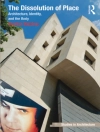Post-industrial urban spaces typically include abandoned factories, disused rail lines, old pits and quarries, and de-commissioned landfills. In these places, different visions compete for dominance with respect to current and future land uses. Neighbours often view such urban greenspace as polluted, unkempt and weedy, harbouring undesirable biophysical features and people. These are spaces that often become the focus of some form of revitalization, reinvestment and restoration. From the perspective of civic authorities and urban planners, transforming post-industrial landscapes into disciplined and tended greenspace creates the urban conditions and signals of popular contemporary taste that attract investors, gentrifiers, and tourists. But post-industrial spaces are also places where unique and unpredictable human and ecological associations can emerge spontaneously. Such places may contain considerable ecological integrity and biodiversity and host human populations who find a home and respite in such ecologies. They also tell stories of an industrial and urban past that should be acknowledged, understood and (if suitable) celebrated. This volume explores the environmental justice and injustice dimensions of emerging urban post-industrial landscapes, including the ecological politics, cultural representations and aesthetics of these spaces.This bookw as published as a special issue of Local Environment.
Jennifer Foster & L. Anders Sandberg
Post-Industrial Urban Greenspace [EPUB ebook]
An Environmental Justice Perspective
Post-Industrial Urban Greenspace [EPUB ebook]
An Environmental Justice Perspective
Compre este e-book e ganhe mais 1 GRÁTIS!
Língua Inglês ● Formato EPUB ● Páginas 104 ● ISBN 9781317430674 ● Editor Jennifer Foster & L. Anders Sandberg ● Editora Taylor and Francis ● Publicado 2017 ● Carregável 3 vezes ● Moeda EUR ● ID 7118444 ● Proteção contra cópia Adobe DRM
Requer um leitor de ebook capaz de DRM












